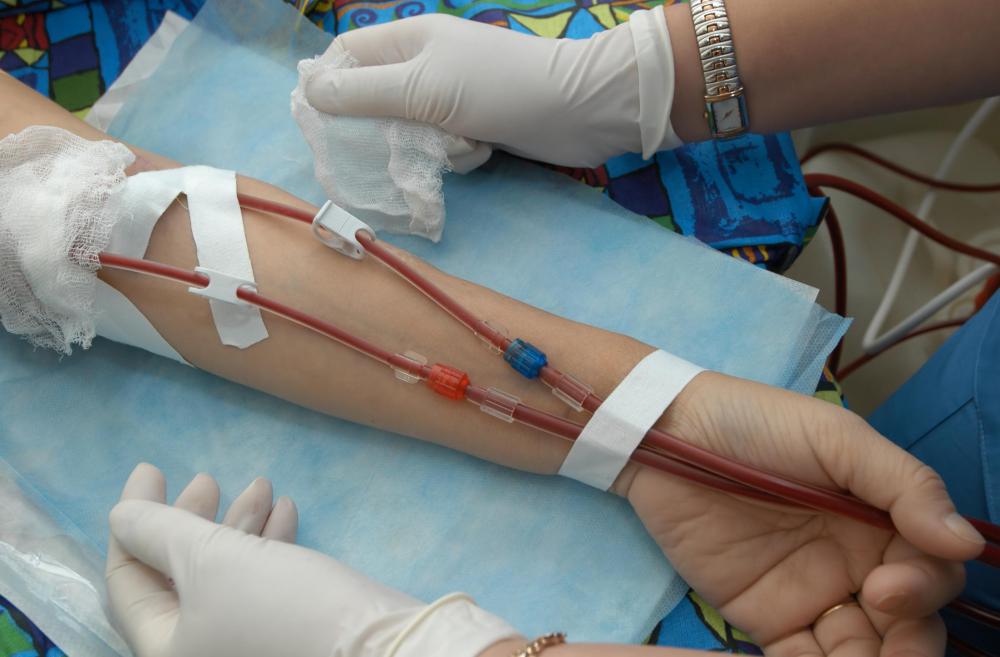At WiseGEEK, we're committed to delivering accurate, trustworthy information. Our expert-authored content is rigorously fact-checked and sourced from credible authorities. Discover how we uphold the highest standards in providing you with reliable knowledge.
What is Osler Weber Rendu Syndrome?
Osler Weber Rendu syndrome is a genetic disorder characterized by irregular blood vessel formations throughout the body. The condition results in skin lesions and severe internal or external bleeding. Osler Weber Rendu syndrome requires lifelong management.
The condition, also known as hereditary hemorrhagic telangiectasia, occurs when capillaries fail to develop normally. As a result, the veins and arteries directly connect in certain areas of the body. The veins and arteries have different pressure levels, so ruptures tend to occur at the spots where the two systems meet.

People who have this condition often have purplish-red clusters of blood vessels called tenangiectases on the face, lips, tongue and fingers, as well as other areas of the body. These clusters break and bleed easily. Some patients also suffer from frequent and heavy nosebleeds.
Many of these patients experience bleeding inside the body as well as outside. They might have black or tarry stools, indicating bleeding in the gastrointestinal tract, or might cough up blood. Some people experience serious complications such as high blood pressure, stroke or heart failure from bleeding inside the brain or body.
Osler Weber Rendu syndrome is most commonly seen in people of Caucasian ancestry, but it can affect people of Asian, African and Arabic descent as well. The disorder affects males and females equally. It usually appears by the age of 30.

A doctor who suspects Osler Weber Rendu syndrome will perform a complete physical examination. He or she will look at the face and body for the presence of telangiectases and will perform blood tests to check for anemia. The blood's ability to clot normally will be measured as well.
The doctor might also conduct chest X-rays to look for arterio-venous malformations (AVMs) on the lungs or order magnetic resonance imaging (MRI) to look for bleeding in the brain. If bleeding is occurring in the gastrointestinal tract, the physician might perform an endoscopy. In this test, a long flexible tube equipped with a tiny camera takes pictures of the inside of the body.

Physicians treat Osler Weber Rendu syndrome based on the needs of the patient. Some people who suffer from frequent nosebleeds benefit from estrogen therapy. Others might require surgical cauterization to treat areas that bleed frequently. Some patients require blood transfusions from time to time, depending on the severity of the condition.
Osler Weber Rendu syndrome does not affect the patient's mental or cognitive abilities, and it does not usually decrease the patient's lifespan. Parents can pass down the disorder to their children. A genetic counselor can advise prospective a parent who has a history of the disease in his or her family.
AS FEATURED ON:
AS FEATURED ON:














Discuss this Article
Post your comments